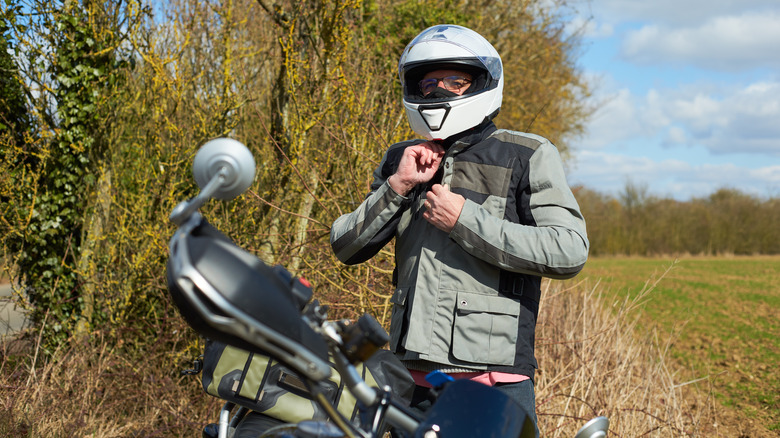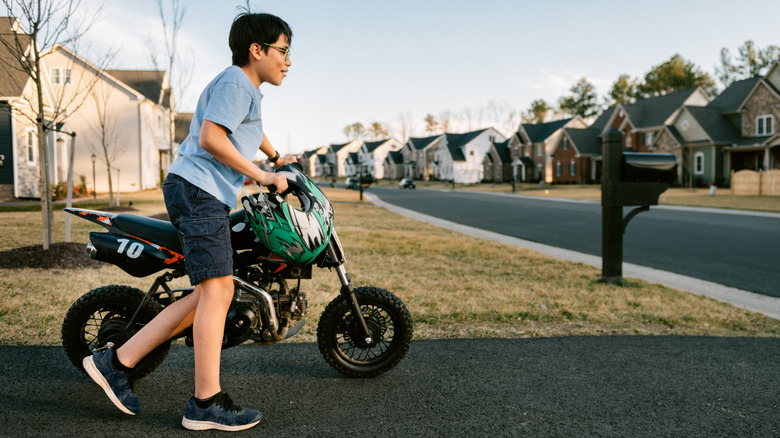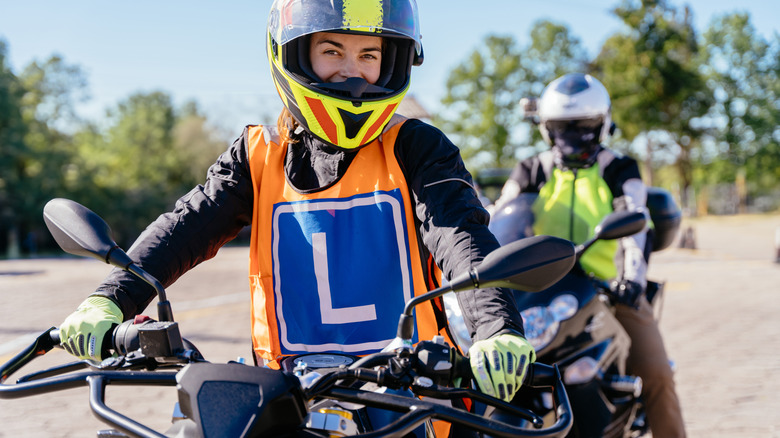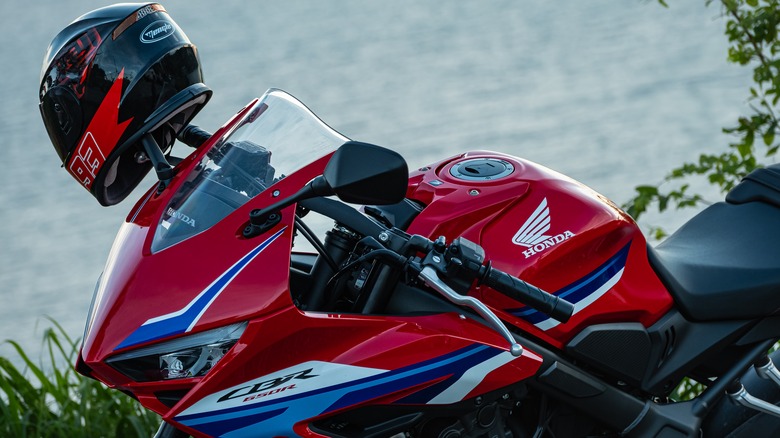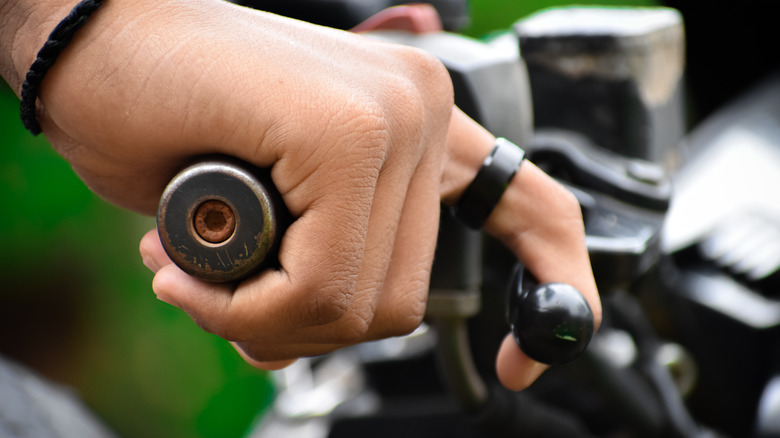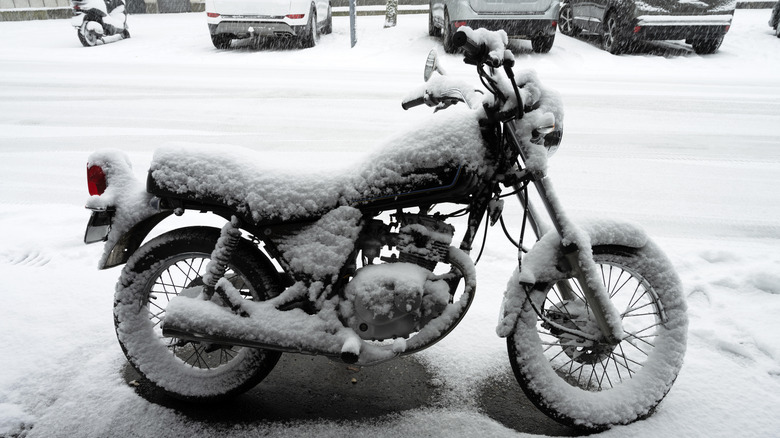5 Mistakes First-Time Motorcycle Buyers Should Avoid
Buying your first motorcycle is exhilarating. While motorcycles and cars both perform as tools for transportation, there's an undeniable joy that comes with hopping on a bike. Of course, buying your first motorcycle comes with plenty of questions, and there's actually a lot that you can get wrong when shopping for your first bike, whether it's a chopper or street bike.
From safety protections to the buying process itself, there are a few important things to keep straight as you peruse the marketplace of excellent and excitement-packed vehicles. These five mistakes are easy traps to fall into and can hamper your development as a new rider. Avoiding them, on the other hand, can smooth out the early days of your adventures and carry over long into your growth as a motorcyclist.
Failing to understand your skill level
Everyone wants to ride a big, powerful motorcycle (even though some of the most iconic bikes are actually smaller models). But hopping on a motorcycle isn't the same as sitting down behind the wheel of the car. If you're accustomed to driving around in a small sedan, you probably won't have much trouble in an SUV. On the other hand, there are plenty of growing pains for those pulling trailers or setting up in a motorhome for the first time. The switch from one class of motorcycle to the next is more akin to this major jump than it might appear.
As someone with plenty of personal knowledge about motorcycles and their riders, I think the disconnect comes from the assumption that motorcycling is just like biking. In a way, this is true. But if your biking skills as a child prepare you for the rigors of a motorcycle, then time spent in a Cozy Coupe should count toward your car driving experience!
The reality is that motorcycles are big, heavy pieces of machinery. With significant power added into the mix, they demand your respect as you navigate the twists and turns of even a basic roadway. More power and weight make a bike harder to control, and new riders simply won't have the ability to effectively manage the demand. This will make motorcycling less fun and often dangerous, too.
Not completing your training and requisite licensing before shopping
It's possible to buy a motorcycle before you have a license to ride it. Generally, you won't need your motorcycle license to register a new bike, but in some states, like New York and California, you can't register a vehicle without insurance already secured. Here, you'll run into a hang-up: You'll also have trouble getting insurance if you don't have a motorcycle license. It's something of a Catch-22. However, even though you technically can own a bike without going through training and licensing steps first, it's advisable to take a more natural progression.
Taking a training course before investing in your own bike allows you to get the hang of riding without spending a ton of cash on a vehicle and all the gear you'll need to safely operate it. On a more practical note, doing it this way also lets you walk away from the motorcycle if you find that it's really not for you without having a hefty expense hanging over your head. Lastly, by taking a training course, you can often reduce the cost of insurance, making your financial picture a little brighter in the process.
Buying a used helmet
The gear you purchase will help keep you safe as you progress as a rider, and buying some used equipment will reduce the cost. For this reason, many bikers new to the practice opt for numerous pieces of used equipment. This is a great approach, but it's not one you should take with your helmet. Always buy a new helmet — they're only rated to sustain a single impact. This also means that if you are involved in a crash, you should replace your helmet before hopping back on the bike. You can't know the history of any used piece of gear you buy, so used helmets should always be a no-go.
Also remember that gear isn't about style or flash. Investing in gloves, a riding jacket, a helmet, and more is a safety measure. You want to dress for the crash you hope never happens, not the ride itself. With good road rash protection and key impact mitigation gear on your body, you have a better chance of walking away from an accident without any serious injuries (one of the many tips every new rider should know).
Skipping a test drive
Bikes are more personal to the rider than a car ever could be. Everything about the riding experience meshes the human body to the piece of equipment. In a car, you're operating a series of controls from the comfort of a perfectly aligned seat. But when you hop on your motorcycle, you'll be using your hands, feet, and entire body to steer and control its speed. Motorcyclists even tend to use hand signals as they drive for much of their maneuvering.
This physicality means that motorcyclists need to be intimately familiar with the bike they choose to ride. Naturally, before buying one, you should take any model you're considering for a test drive. This is an important step in any vehicle buying process, but with a motorcycle it will reveal how the bike performs for your specific riding style. A model that seems great on paper might not have a favorable weight distribution for your precise needs, for instance. Similarly, driving around on a bike allows you to explore its overall weight, the exact positioning of its handles, foot pegs, and more. It also gives newer riders the room they need to evaluate whether or not the tool is too powerful for their skill level. It's all about personal fit, and without a test drive, you simply can't make that determination.
Riding in the rain, snow, or heavy traffic
Many newer riders are tempted to throw caution to the wind as they continue to gain exposure to biking and grow more confident with their skills. But motorcycles and their riders are exposed to the elements in ways that other drivers aren't. The rain, snow, or wind can significantly impede a biker's ability to safely navigate, and adding traffic into the mix complicates things even more. As a result, novice riders should think carefully about the weather, time of day, and other aspects of a journey's conditions.
If the weather turns sour, your adventure will be filled with lots of hardship rather than excitement. This can really dampen the mood, but it's also a serious safety hazard for those who may not be prepared for wet or windy conditions. On two wheels, you'll have a lot less stability. And with the power production simply delivering a different sort of torque and movement output, it's far easier for motorcyclists to spin their tires, skid, or lose control in other ways while riding in challenging conditions. This isn't something you should take on until you're familiar with your new bike and have gained some confidence navigating on it. Another thing to stay away from is heavy traffic, and particularly highways. High speeds and lots of other drivers make it harder to balance your decision-making skills. On a vehicle you're not totally confident with, this can easily become hazardous.
